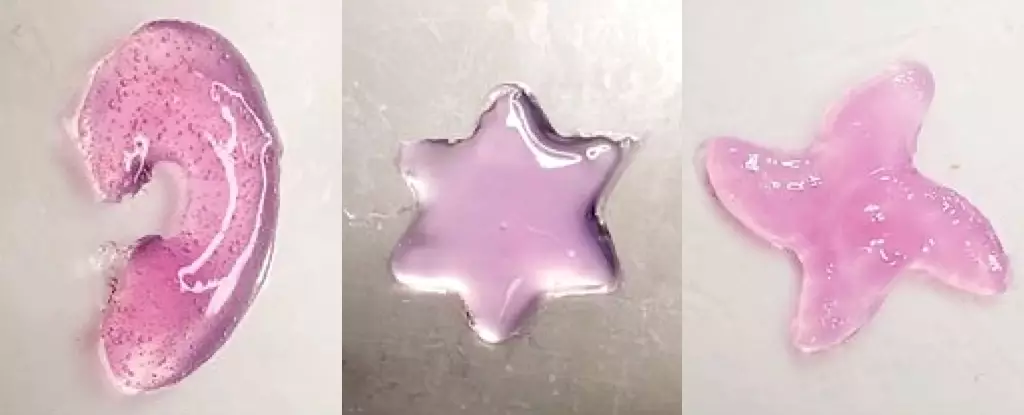The advent of 3D printing technology has already reshaped various industries, but its integration into the medical field could be nothing short of revolutionary. A groundbreaking method developed by a team of researchers at the California Institute of Technology allows for the real-time printing of materials inside the body using focused ultrasound. This innovative technique, known as deep tissue in vivo sound printing (DISP), represents a significant leap forward in localized treatment strategies, especially concerning cancer therapies and tissue engineering.
Unlike traditional methods that often deliver drugs or therapies systemically and rely on the body’s own processes to direct those treatments, DISP promises a more efficient and targeted approach. The ability to 3D print biocompatible materials directly within the body creates opportunities for life-saving interventions that were once thought to be the realm of science fiction. Imagine a scenario where cancer drugs are precisely delivered to the tumor site, drastically increasing the efficacy of treatment while minimizing side effects. This is not merely a vision for the future; early animal studies, including trials on mice and rabbits, have suggested that such possibilities are becoming tangible realities.
The Mechanisms Behind DISP
The method centers around a bioink comprised of polymer chains and crosslinking agents, which are essential for the creation of stable hydrogel structures within the body. The ingenuity of the approach lies in the use of lipid-based particles known as liposomes, which protect the fragile crosslinking agents until they are triggered by focused ultrasound at specific temperatures. By heating these liposomes, researchers can directly influence the hydrogel formation at targeted sites in the body, even reaching depths of up to 4 centimeters below the skin’s surface. This capability starkly contrasts with previous techniques that relied on infrared light, which had limitations in penetration depth.
This strategic choice for ultrasound not only expands the range of possible applications for the bioink but also addresses key issues surrounding biocompatibility and safety. Research points toward no toxicity associated with the printed hydrogel, and residual bioink is naturally expelled from the body within a week. The focus on creating conductive bioinks through materials like carbon nanotubes suggests an additional pathway to enhance diagnostic methods. Such attributes position DISP as not just a tool for treatment, but also for innovative monitoring and diagnostic applications.
Clinical Implications and Future Prospects
With the preliminary findings indicating that DISP could significantly outperform conventional methods—such as the enhanced delivery of the chemotherapy drug doxorubicin, which demonstrated greater cancer cell death in trials—it invites a re-evaluation of how we approach treatment plans for illnesses that require intricate methods of drug administration. The ability to embed the therapeutic agents within the hydrogel matrix directly at the site of action, complemented by the controlled release of these agents, holds considerable promise.
However, it is essential to temper our excitement with a dose of realism. The leap from successful animal trials to human applications involves myriad regulatory and ethical hurdles. Scientists like Wei Gao of Caltech underscore the importance of advancing through larger animal models before setting sights on human testing, an essential pathway that ensures safety and efficacy are maintained.
Nonetheless, the prospects are exhilarating—imagine organ repair and regeneration achieved seamlessly during surgery or localized cancer treatments that substantially reduce the need for extensive chemotherapy regimens. The avenues for exploration seem endless, potentially leading to breakthroughs in how medicine approaches not just therapeutic delivery but also foundational principles of how we consider tissue health and repair.
A New Era in Biomedical Research
Ultimately, the implications of DISP extend well beyond cancer treatment and tissue engineering. This technology opens new dialogues within biomedical research, prompting scientists and practitioners alike to rethink the interplay of materials science, engineering, and biology. Future advancements could lead to even smarter bioinks—those tailored to specific medical conditions or features that respond dynamically to the physiological conditions of the body.
As research unfolds, and with the commitment of teams dedicated to bridging the gap between lab and clinic, DISP is poised to redefine modalities in medical treatment. This convergence of technology and biology may well ignite a new era in personalized medicine, where treatments are not only more precise but also better suited to the realities of human physiology. With such promising potentials, deep tissue in vivo sound printing stands as a testament to what the future holds for healthcare—a future that is not only innovative but also profoundly human-centered.


Leave a Reply